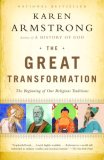Summary | Excerpt | Reading Guide | Reviews | Beyond the Book | Readalikes | Genres & Themes | Author Bio

Critics' Opinion:
Readers' Opinion:
First Published:
Mar 2006, 496 pages
Paperback:
Apr 2007, 560 pages
 Book Reviewed by:
Book Reviewed by:
BookBrowse Review Team
Buy This Book
The Aryans had no elaborate shrines and temples. Sacrifice
was offered in the open air on a small, level piece of land,
marked off from the rest of the settlement by a furrow. The
seven original creations were all symbolically represented
in this arena: Earth in the soil, Water in the vessels, Fire
in the hearth; the stone Sky was present in the flint knife,
the Plant in the crushed soma stalks, the Bull in the
victim, and the first Man in the priest. And the gods, it
was thought, were also present. The hotr priest,
expert in the liturgical chant, would sing a hymn to summon
devas to the feast. When they had entered the sacred
arena, the gods sat down on the freshly mown grass strewn
around the altar to listen to these hymns of praise. Since
the sound of these inspired syllables was itself a god, as
the song filled the air and entered their consciousness, the
congregation felt surrounded by and infused with divinity.
Finally the primordial sacrifice was repeated. The cattle
were slain, the soma pressed, and the priest laid the
choicest portions of the victims onto the fire, so that Agni
could convey them to the land of the gods. The ceremony
ended with a holy communion, as priest and participants
shared a festal meal with the deities, eating the
consecrated meat and drinking the intoxicating soma, which
seemed to lift them to another dimension of being.
The sacrifice brought practical benefits too. It was
commissioned by a member of the community, who hoped that
those devas who had responded to his invitation and
attended the sacrifice would help him in the future. Like
any act of hospitality, the ritual placed an obligation on
the divinities to respond in kind, and the hotr often
reminded them to protect the patron's family, crops, and
herd. The sacrifice also enhanced the patron's standing in
the community. Like the gods, his human guests were now in
his debt, and by providing the cattle for the feast and
giving the officiating priests a handsome gift, he had
demonstrated that he was a man of substance. The benefits of
religion were purely material and this-worldly. People
wanted the gods to provide them with cattle, wealth, and
security. At first the Aryans had entertained no hope of an
afterlife, but by the end of the second millennium, some
were beginning to believe that wealthy people who had
commissioned a lot of sacrifices would be able to join the
gods in paradise after their death.
This slow, uneventful life came to an end when the Aryans
discovered modern technology. In about 1500, they had begun
to trade with the more advanced societies south of the
Caucasus in Mesopotamia and Armenia. They learned about
bronze weaponry from the Armenians and also discovered new
methods of transport: first they acquired wooden carts
pulled by oxen, and then the war chariot. Once they had
learned how to tame the wild horses of the steppes and
harness them to their chariots, they discovered the joys of
mobility. Life would never be the same again. The Aryans had
become warriors. They could now travel long distances at
high speed. With their superior weapons, they could conduct
lightning raids on neighboring settlements and steal cattle
and crops. This was far more thrilling and lucrative than
stock breeding. Some of the younger men served as
mercenaries in the armies of the southern kingdoms, and
became expert in chariot warfare. When they returned to the
steppes, they put their new skills to use and started to
rustle their neighbors' cattle. They killed, plundered, and
pillaged, terrorizing the more conservative Aryans, who were
bewildered, frightened, and entirely disoriented, feeling
that their lives had been turned upside down.
Excerpted from The Great Transformation by Karen Armstrong Copyright © 2006 by Karen Armstrong. Excerpted by permission of Knopf, a division of Random House, Inc. All rights reserved. No part of this excerpt may be reproduced or reprinted without permission in writing from the publisher.





The Funeral Cryer by Wenyan Lu
Debut novelist Wenyan Lu brings us this witty yet profound story about one woman's midlife reawakening in contemporary rural China.
Your guide toexceptional books
BookBrowse seeks out and recommends the best in contemporary fiction and nonfiction—books that not only engage and entertain but also deepen our understanding of ourselves and the world around us.